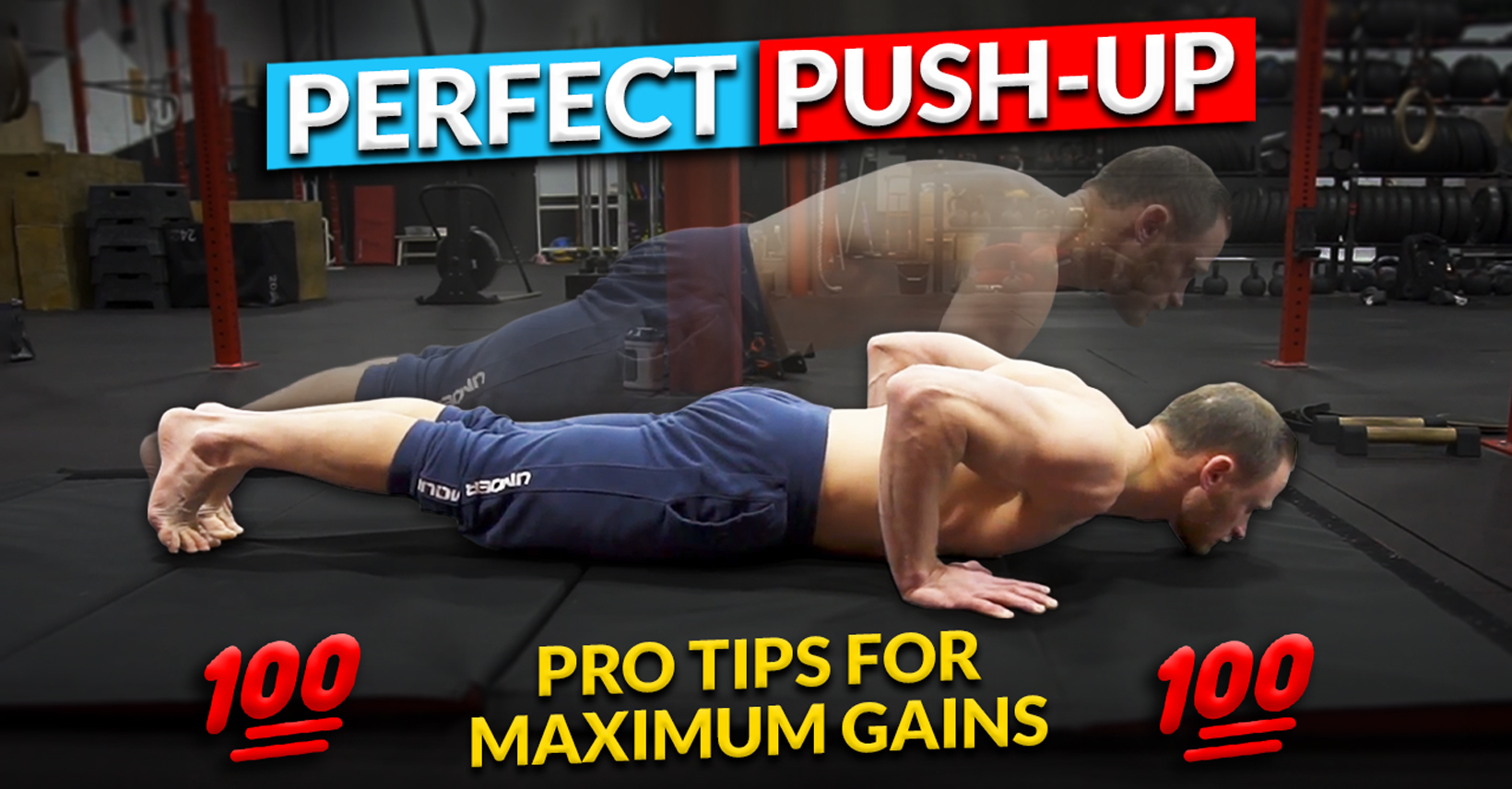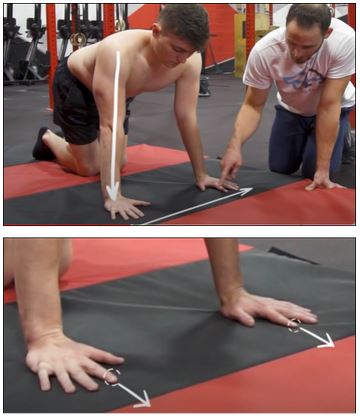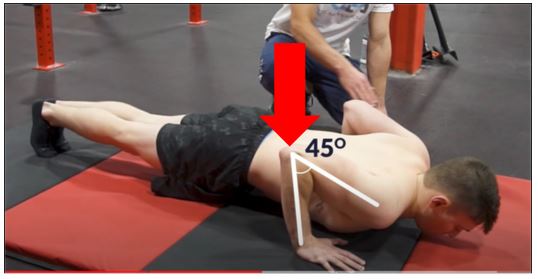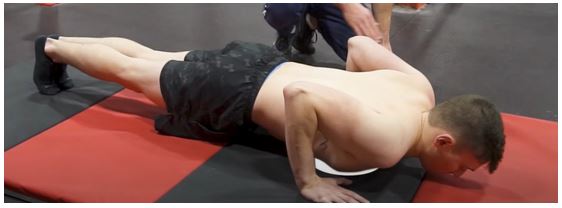✨Mastering the Perfect Push Up: A Step-by-Step Guide to Flawless Form
Are you tired of going through the motions with your push-ups, unsure if you’re genuinely reaping the rewards? If you’re seeking to unlock the full potential of this iconic exercise, it’s time to delve deeper.👊
Adding push-ups to your workout routine can help you strengthen your upper body, keep your core strong, and improve your overall fitness. But here’s the catch: perfecting the push-up requires more than mindlessly dropping and rising. Don’t fret, though!
🎉This complete guide will show you how to do the perfect push-up by giving you step-by-step instructions and tips on using the proper form. Get ready to change how you do push-ups and experience the transformative power of this essential exercise. Let’s begin!
🏆Benefits of Push-Ups
Push-ups offer a multitude of benefits that extend beyond just building a solid upper body. Adding push-ups to your workout routine has a lot of benefits, such as improving your functional strength, core stability, and cardiovascular health. Here are some known benefits of push-ups:
1. Strengthens💪 the Upper Body
Push-ups target the chest, shoulders, and triceps, promoting overall upper-body strength and muscle development.
2. 🔥Builds Core Stability
The plank-like position during push-ups engages the core muscles, including the abs and lower back, helping to improve stability and balance.
3. Enhances Functional Fitness🏃
Push-ups mimic real-life movements, improving functional fitness by enhancing the ability to push and perform daily activities with ease.
5. 🔎Increases Bone Density
Weight-bearing exercises like push-ups stimulate bone growth, improving bone density and reducing the risk of osteoporosis.
6. Boosts Metabolism🤛
Push-ups engage multiple muscle groups, leading to increased calorie burn during and after the exercise and supporting weight management.
7. Improves Upper 🙌Body Definition
Regular push-up practice helps tone and define the muscles of the chest, shoulders, and arms, enhancing upper body aesthetics.
8. ✊Enhances Functional Strength
Push-ups improve overall functional strength, benefiting activities like carrying heavy objects, pushing doors, or performing sports movements.
9. Improves Posture😱
Push-ups can help combat the adverse effects of prolonged sitting and poor posture habits by strengthening the muscles responsible for good posture.
10. Promotes Cardiovascular 🩺Health
Performing push-ups quickly and continuously can elevate the heart rate, providing a cardiovascular benefit and improving overall heart health. According to the study, having a higher baseline push-up capacity is linked to a lower risk of cardiovascular disease.
Remember that proper form and gradual progression are essential for maximizing the benefits and reducing the risk of injury during push-up exercises.
| Related Articles: Learn more about push-ups by checking out our article on:
📍How to Do Push-Ups: The Ultimate Guide 📍How Beginners Do PUsh-Ups: Mastering The Basics 📍15 Challenging Advanced Push-Up Variations: To Spice Up Your Workout |
🎯Steps to a Perfect Push-Up
Push-ups serve as a fundamental exercise that forms the basis for advanced movements like dips, planches, and levers in calisthenics. You build a solid foundation to progress toward more challenging bodyweight exercises by mastering the mechanics and strength required for a perfect push-up. The core engagement, upper body strength, and stability developed through push-ups lay the groundwork for achieving impressive power and control in advanced movements.
This guide will focus on five specific areas crucial for a perfect push-up. These areas will be explained in detail, enabling you to execute them effectively and master the technique:
- ✅Hand Placement: Place your hands slightly wider than shoulder width, with your index fingers facing forward at 12 o’clock. This helps with grip and external rotation of the shoulders.
- ✅Straight Plank Position: Ensure your arms are straight, your head is neutral, and your shoulders are protracted. Maintain a straight line from your head to your heels by tilting your pelvis and squeezing your glutes. Keep your legs straight and your feet together with dorsiflexed ankles.
- ✅Elbow Direction: As you lower into the push-up, your elbows should be at a 45-degree angle, neither going outward nor behind you. Find a position between these two extremes.
- ✅Range of Motion: Bend your elbows and lower your body as low as possible without experiencing any pain. Aim for your nose or chest to touch the floor while maintaining a straight body line.
- ✅Return to Start Position: Push back up, straightening your arms, and return to the top position with locked elbows.
Here’s a full video for this push-up guide:
By assessing and maintaining these checkpoints throughout your push-up, you can ensure proper form and technique for effective and safe execution.
💥Progression and Variation
Progression and variation are essential aspects of push-up training to continually challenge your muscles and enhance your overall strength and skill. Here are some key points to consider when it comes to progression and variation in push-ups:
- ⚡️Progressive Overload: Gradually increase the difficulty of your push-ups to stimulate muscle growth and strength gains. Start with basic push-ups on the floor and then progress to more advanced variations as you get stronger.
- ⚡️Push-Up Variations: There are numerous push-up variations that target different muscle groups and add variety to your workouts. Some common variations include diamond push-ups (narrow hand placement), wide push-ups (wider hand placement), decline push-ups (elevating your feet), and plyometric push-ups (explosive movements). Explore these variations to challenge your muscles in new ways.
- ⚡️One-Arm and One-Leg Push-Ups: Once you have developed sufficient upper body and core strength, you can advance to more challenging variations such as one-arm push-ups or one-leg push-ups. These variations increase the demand on your muscles and require greater stability and control.
- ⚡️Weighted Push-Ups: Incorporating weight plates, a weighted vest, or resistance bands can add external resistance to your push-ups, making them more challenging and promoting further strength gains.
- ⚡️Progressive Range of Motion: Gradually increase the depth of your push-ups by lowering yourself closer to the ground. This helps improve flexibility, strength, and overall muscle development.
Remember, it’s important to progress gradually and maintain proper form and alignment in each variation. Always listen to your body, avoid overexertion, and consult a fitness professional if needed. Progression and variation will keep your workouts engaging and ensure continued progress in your push-up training.
😢Common Mistakes
When performing push-ups, it’s important to be aware of common mistakes that can compromise your form and limit the effectiveness of the exercise. Here are some common mistakes to avoid:
- 👎Sagging or Drooping Hips: Keep your body in a straight line from head to heels throughout the movement. Avoid allowing your hips to sag or droop, as this can strain your lower back and decrease the activation of the core muscles.
- 👎Flaring Elbows: Keep your elbows at a 45-degree angle, neither too wide nor tucked too close to your body. Flaring your elbows out to the sides can place excessive stress on the shoulder joints and limit the engagement of the chest and triceps.
- 👎Incomplete Range of Motion: Aim to lower your body until your chest or nose touches the floor, achieving a full range of motion. Avoid only performing partial push-ups as this limits the activation of the muscles and hinders progress.
- 👎Head Alignment: Keep your head aligned with your spine. Avoid dropping your head or looking upward, as this can strain your neck and disrupt the natural alignment of your body.
- 👎Holding Your Breath: Breathe continuously throughout the movement. Inhale as you lower your body and exhale as you push back up. Holding your breath can lead to unnecessary tension and decrease the efficiency of the exercise.
- 👎Poor Hand Placement: Ensure your hands are positioned slightly wider than shoulder-width apart, with fingers pointing forward or slightly outward. Placing your hands too close together or too far apart can compromise stability and engagement of the targeted muscles.
By avoiding these common mistakes and focusing on proper form and technique, you can optimize the benefits of push-ups and reduce the risk of injury. Practice mindfulness, pay attention to your body’s alignment, and make necessary adjustments to maintain optimal form.
| Help Article: For a more detailed discussion on common mistakes when doing push-ups read our article:
📍Don’t Sabotage Your Progress-10 Common Push Up Mistakes You Need to Avoid |
💧Safety and Precaution
Safety and precaution are crucial when performing push-ups to prevent injuries and ensure a productive workout. Here are some important points to consider:
- ☝️Warm-up: Prior to starting your push-up routine, it’s essential to warm up your muscles with dynamic stretches or light cardio exercises. This helps increase blood flow, loosen joints, and prepare your body for the physical demands of push-ups.
- ☝️Proper Form: Maintain proper form throughout the exercise, focusing on alignment and engagement of the core muscles. Keep your body in a straight line from head to toe and avoid excessive arching or sagging of the back. This helps distribute the load evenly and reduces the risk of strain or injury.
- ☝️Gradual Progression: Progress gradually by increasing the intensity, repetitions, or difficulty of your push-ups over time. Rushing into advanced variations or high volume without building sufficient strength can lead to overexertion or muscle imbalances. Listen to your body and progress at a pace that feels comfortable and safe for you.
- ☝️Joint Health: Take care of your wrists, elbows, and shoulders during push-ups. Maintain proper alignment of these joints, avoiding excessive strain or excessive range of motion that may cause discomfort. If you have pre-existing joint issues, consult a healthcare professional or modify the exercise accordingly.
- ☝️Breathing: Remember to breathe properly during push-ups. Inhale as you lower your body and exhale as you push back up. Holding your breath can increase intra-abdominal pressure and lead to unnecessary tension or dizziness.
- ☝️Rest and Recovery: Allow your body ample rest and recovery time between push-up sessions. This helps prevent overuse injuries and promotes muscle repair and growth. Incorporate rest days into your routine and listen to your body’s signals if you need additional recovery time.
- ☝️Listen to Your Body: Pay attention to any pain, discomfort, or unusual sensations during push-ups. If something feels off or causes pain, stop immediately and seek guidance from a healthcare professional. It’s important to prioritize your safety and well-being.
By following these safety guidelines and listening to your body, you can enjoy the benefits of push-ups while minimizing the risk of injury. Consistency, proper form, and a mindful approach are keys to a safe and effective push-up practice.
🌟Wrapping Up
Mastering the perfect push-up requires attention to detail, proper form, and gradual progression. By focusing on key areas such as hand placement, form, variations, and safety precautions, you can maximize the effectiveness of your push-up workouts while minimizing the risk of injury.🤕
Incorporating push-ups into your fitness routine provides a versatile and impactful exercise that strengthens multiple muscle groups and contributes to overall upper body strength, stability, and functional fitness.
Unlock the path to building real-life strength, bullet-proof joints, and a gymnast-like body with Adaptive Calisthenics. TAKE AN ASSESSMENT with The Movement Athlete Academy to access expert guidance, personalized workouts, and a transformative fitness experience.
🧐Frequently Asked Questions
🔎Do push-ups have to be perfect?
No, push-ups don’t have to be perfect. While proper form is essential for maximizing benefits and reducing the risk of injury, it’s not necessary to achieve flawless execution. Strive for good form and gradual progression, and listen to your body. Focus on consistent practice rather than obsessing over perfection.
🔎How many push-ups should I do a day?
The recommended number of daily push-ups varies based on individual fitness levels and goals. Begin with a number that challenges you without compromising form, such as three sets of 10 to 15 reps. Gradually increase the volume as your strength improves. Listen to your body and avoid overtraining.
🔎What muscles do push-ups use?
Push-ups primarily engage the chest, shoulders, triceps, and core muscles.










